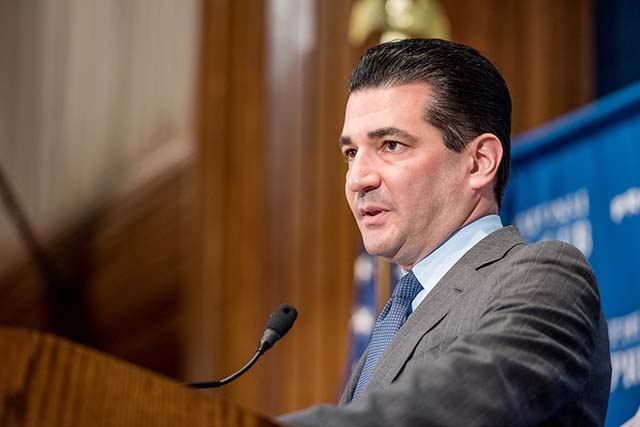
The US FDA has announced plans to modernise its 510(k) clearance programme for approving medical devices for the US market. Data show that about 20% of current 510(k) devices are approved on trials that compare novel devices to predicate devices that are more than 10 years old. With its revised programme, the agency wants to ensure medical devices coming to market account for advances in technology or demonstrate that they meet more modern safety and performance criteria. The announced changes follow a report from the International Consortium of Investigative Journalists (ICIJ) that heavily criticises how medical devices are approved for use.
Under the existing 510(k) clearance programme, a medical device can be approved for market if (according to a study) it shows comparable safety and efficacy to a similar device that is already on the market. However, a limitation of this programme is that a substantial amount of devices (20%) are compared with devices (or predicates) that are more than 10 years old. In a statement, Scott Gottlieb (FDA commissioner) and Jeff Shuren (director of the Center for Devices and Radiological Health) comment: “Older predicates might not closely reflect modern technology embedded in new devices, or our more current understanding of device benefits and risks”. They stress that they are not suggesting these older devices, or the devices that are compared to them, are unsafe but note “we believe encouraging product developers to use more modern predicates would give patients and their doctors a choice among older and newer versions of the same type of device, promote greater competition to adopt modern features that improve safety and performance, and help make sure that newer devices reflect more modern technology and standards that can improve patient care and outcomes”.
Therefore, the FDA is proposing to list devices on its website that have demonstrated substantial equivalence to older predicate devices, with predicates that are more than 10 years old as a starting point. However, before going ahead with this plan, Gottleib and Shuren state that the agency is seeking public feedback on “whether we should make public those devices or those manufacturers who make technology that rely on predicates that are more than 10 years old, whether other criteria should inform our point of reference, and whether there are other actions we should take to promote the use of more modern predicates”.
Additionally, early next year, the FDA intends to finalise guidance establishing an alternative 510(k) pathway that will allow manufacturers of certain well-understood device types to rely on objective safety and performance criteria to demonstrate substantial equivalence as a way to make the pathway more efficient and to adopt modern criteria as the basis for the predicates that are used to support new products. “We are planning to rename this new approach the ‘Safety and Performance Based Pathway’ to reflect its focus on advancing improved safety and performance of new products. Through this new path, a company would demonstrate a novel device meets modern performance-based criteria that have been established or recognised by the FDA and reflect current technological principles,” Gottleib and Shuren comment. They add that “eventually” they would like this new pathway to replace the practice of comparing a new device to “a specific and, sometimes old, predicate device”.
As well as announcing the changes to the 510(k) clearance programme, in their statement, Gottleib and Shuren highlight the work that the Center for Devices and Radiological Health (CDRH), a subset of the FDA, has done (since 2009) to eliminate the use of the 510(k)-cleared predicates when the devices have raised safety concerns that “warrant treating them as high-risk technologies”. They explain that through a process called “up-classifying”, the FDA relabels such a device as “Class III”—meaning it requires “premarket approval, “our most stringent review pathway”, before it can remain on the market.
After discussing other proposed revisions, Gottleib and Shuren conclude their statement by saying: “We are proud of the work CDRH staff are doing to make sure that the devices we regulate are safe. We will continue to take new actions to strengthen the device programme for years to come.”
Report heavily criticises medical device industry
A few days prior to the FDA announcing its changes to the 510(k) programme, the ICIJ published deeply critical report of the medical device industry. The report—the result of a year-long investigation by the ICIJ—highlights several case examples of patients being harmed by medical devices (from a mesh implant to treat incontinence to implantable cardioverter defibrillators). It claims that the medical device industry may be “unnecessarily putting millions of patients at risk of serious harm in its quest for profit”, calling into question how devices are regulated and approved for market. According to the report, governments in “dozens of countries” in Africa, South America, and Asia “do not regulate medical devices at all, instead placing their trust in European authorities or in the US FDA”. Furthermore, while the report acknowledges that the FDA “is generally considered to provide more robust oversight than any other heath agency in the world”, it states “even that oversight is lacking, with complex devices approved too quickly by American authorities and troublesome ones not pulled from hospital shelves fast enough, patient advocates and health experts say”.
At present, there is not a global resource for recalls and safety notices; therefore, to address this issue, the ICIJ has built the “International Medical Devices Database”. The report explains the database “gathers recalls, safety alerts and field safety notices (more than 70,000 from 11 countries) to create a searchable portal that anyone can access to help discover whether a device was flagged for official safety concern”. It adds the database shows that, over the past decade, there have been “more than 2,100 ‘Class I’ recalls in the USA for defects deemed to pose a ‘reasonable chance’ of ‘serious health problems or death’”. “Some of these could be addressed easily, with a quick software update or change of wording in the instructions, while others involved devices implanted in millions of patients that spurred thousands of surgical removals,” the report comments.
Most of the examples given in the report relate to non-cardiac devices but it does touch upon the issue of durability of transcatheter aortic valve implantation (TAVI) valves. Also, in a separate article on Implant Files (the website where the report is published), safety concerns are raised about the expanding use of TAVI given the limited data for the durability of the valves. However, the article does not acknowledge that the lack of durability data for TAVI valves is a known concern that is regularly addressed at conferences and in medical articles.
Responding to the ICIJ report, the Advanced Medical Technology Association (AdvaMed)—the foremost US trade group for the device industry—accuses it of “magnifying the stories of only a few individuals” and, thus, overlooks the “overwhelming positive experiences of millions of others”. “We take seriously all reports of patient impact, and though the medical community can never completely eliminate risk, we always strive to improve our technologies and delivery care,” the AdvaMed statement adds.










